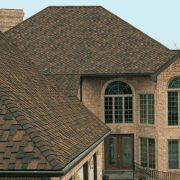How to Install a Metal Roof
If local building codes permit, you may be able to save money by putting a corrugated metal roof on your shed or garage (this type of roof is not recommended for a home). A tin roof or corrugated metal is a relatively cheap investment, and is durable. Learn how to install a tin roof with this simple method. The materials are indicated for a shed measuring 10 feet (3,048 meters) by 10 feet (3,048 m). Buy more material and trim, if necessary.
Instructions
- Measure the dimensions of the shed or garage roof and add 4 inches (10 cm) on a slope. Take a picture or two if there is something unusual on the roof. Take your measurements, photos and list of things needed to buy to your local hardware store and ask for help to find the materials you’ll need for your roof.
- Put on thick goggles and gloves. Use a flat blade to scrape off the old shingles and tar. Remove all the old roof, stripped to the roof sheathing or plywood. Use pliers to pull all the nails that protrude from the surface. If there is no plywood on the joists, or it’s in poor condition, install plywood or have a professional install it for you.
- Line the ceiling, using new asphalt infused paper (tar paper). Most professional roofers use a nail gun to attach the tar paper, but a staple gun, or “big-headed nails” for ceilings (also called nail to paper) work well. Apply nails every 12 inches (30 cm).
- Install sheets together to place the new tin roof. Place a 1 by 4 inches (2.5 to 10 cm) board at the bottom edge of the roof. The board must be aligned with the 4 inch (10 cm) edge lying against the ceiling surface. Drill 3 inch (7.5 cm) wood screws through 1 inch (2.5 cm) board at the beams. If necessary, cut another 1 by 4 inches (2.5 to 10 cm) board and attach it, aligning it first. Add 2 feet (61 cm) and attach another board in the same way. Work from the bottom to the top of the roof.
- Nail the metal rim around the edges of the roof, using a hammer and hot dipped galvanized nails for waterproofing roof or a cordless drill and screws.
- Cut tin for the first part of the roof which go from the top of the roof going 4 inches (10 cm) to the roof edge. Place one of the sheets that is going to the other side of the roof, on top, in order to extend about 6 inches (15 cm) through the top. Fold the bottom of the sheet down over the top. Chalk 4 inches (10 cm), and remove the piece of roof. Cut all the pieces for the other side of the roof that length.
Installation
- First, screw the sheet metal strips together that are below it. Place the screws in the middle and inner edge of the blade. The panels must be able to expand and contract with temperature changes, so do not put nails or screws in all the way. Drill them until they just touch the sheet. Tighten only one in the center of the top of each panel.
- Overlay the first channel V of the second sheet in the last channel V of the first sheet, and screw or nail through the two sheets and continue to the left side of the second sheet, and then the center of the second sheet. Remember to tighten the screw or nail only at the top center. Repeat the process in the same way until you’re ready for the last sheet on that side of the roof. At the edge of the roof, you have to cut the last sheet to fit.
- Repeat Step 3 of Preparation section: sheets installed on the other side of the roof, working from the bottom up.
- Repeat Steps 1 and 2 of Installation to install the sheets across the roof. Be sure to leave 6 inches (15 cm) extra at the peak of the roof. Fold each sheet and screw into place throughout the upper edge before installing the next panel. Alternatively, you can install a vent and a cap on the ridge, but it’s not required on the roof of a shed.
Tips & Warnings
Make sure you place the first sheet on either side of the roof square, because the panels are attached to the previous panels. If they are not square, it will make the finished project off. Have a helper or two to make the work go much faster. For simplicity, you can skip the metal rim and leave an excess of film on both sides of the shed roof.






